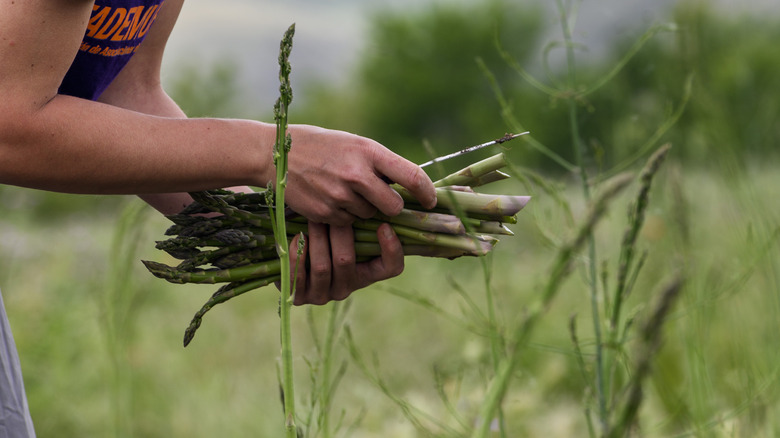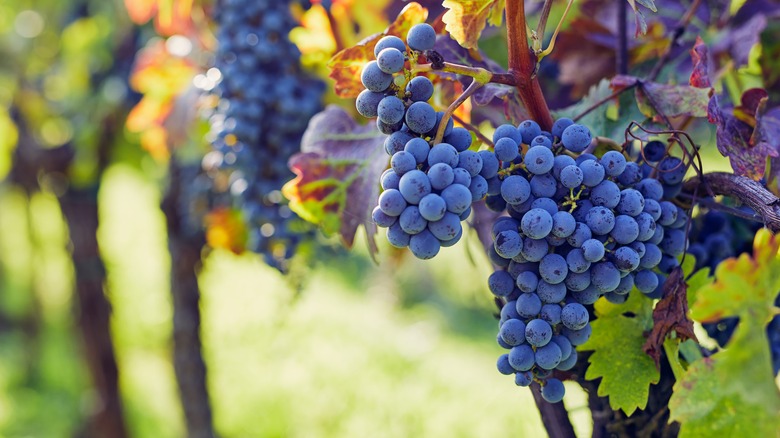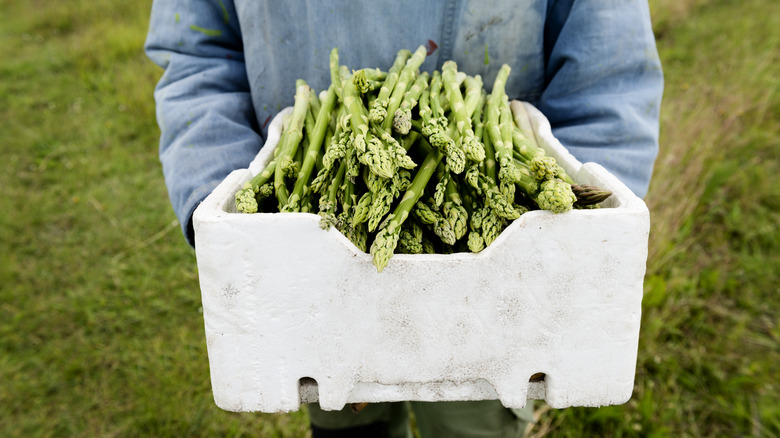The Tasty Fruit That Benefits From Being Planted Alongside Asparagus
When creating a garden, you don't want to just look at how to care for your individual plants and shrubs. Instead, you should aim to survey your whole setup and consider how you can make it thrive in unison. While traditional planning often relies on well-established plant pairings, some unconventional combinations offer surprising benefits. One beneficial match-up that might seem strange but makes a lot of sense in the long run is grapes and asparagus plants.
In general, companion planting can benefit your garden in many ways. Some of the biggest perks include helping with sun exposure, weed control, and soil health. Despite seeming like an unusual duo, planting grapes and asparagus together offers several practical advantages for both, not to mention making your garden easier to tend to since they work together. By leveraging sunlight, available vertical space, and a staggered harvest, this unique pairing is mutually beneficial.
Similar soil requirements
Both grapes and asparagus require full sun for optimal growth. By planting grapes and asparagus together, you create a synergistic arrangement regarding sunlight. It maximizes garden space because they each have uniquely different growth patterns. Asparagus shoots rise vertically and grow 4-8 feet, which leaves ample sunlight for grapevines.
Since they are also tall plants that grow upward, they will complement each other as they grow. Grapevines, which can grow to 12-15 feet and be made to grow up a trellis or a fence, won't shade out the asparagus shoots, which require direct sunlight for healthy growth. This shared light exposure ensures both plants receive the necessary energy to thrive without competing for resources. Also, asparagus has very deep roots, and this helps keep them firmly entrenched in the ground for a long time. Since both grapes and asparagus are perennials, you will only need to plant them once and then look forward to their emergence each year.
Shared soil and different harvest times
Both grapes and asparagus also require well-drained soil to grow optimally. Well-drained soil allows water to flow out freely and efficiently while still retaining enough moisture for plant growth. It doesn't hold onto excess water for long periods, preventing waterlogging and root rot, but it also doesn't dry out completely, depriving plants of necessary moisture.
The harvest seasons of grapes and asparagus conveniently complement each other. Asparagus is typically harvested in spring, from late March to the beginning of June. According to the University of Minnesota Extension, the growth of any remaining asparagus substantially decelerates following the spring harvest. Meanwhile, grapevines require minimal attention during this period, focusing their energy on fruit development. As summer wraps up, the grape harvest kicks off from late summer to mid-fall. During this time, the asparagus patch rests and replenishes for the following season. This spaced-out schedule allows you to focus on each crop at its peak without feeling overwhelmed by the demands of both plants at the same time. Growing your own grapes and asparagus can give you plenty of fresh fruit and vegetables and be relatively easy to accomplish side-by-side.


